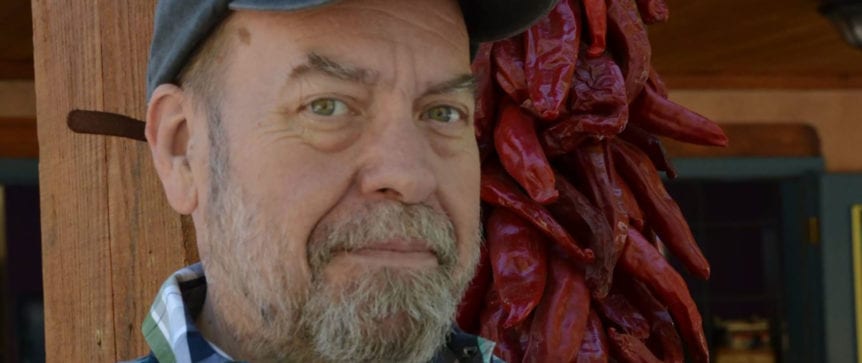I didn’t know Ron Thornton that well, although he was certainly kind and generous and supportive of me in my writing and projects. I may not even have any pics with him, back from the time of no cameras-on-pagers known as The Nineties.
Following his passing Monday afternoon after a long illness, you can read much more by his Trekside colleagues Mike Okuda and Daren Dochterman here at the excellent remembrance startrek.com ran today… where I pilfered the above photo. There are many more reflections on Ron scattered around Facebook by both peers and proteges.
But with his far-too-soon passing on Monday, it brings to mind how much our world has changed, how much storytelling capability on television has changed.. and so much of it due to Ron. For all you kids raised on cheap n’ easy CGI* you do on your own laptop… Ron was literally the one who brought the magic of new digital effects to weekly TV.
Ron was a hands-on visual effects guy, and has plenty of credits to prove it. But by the time he’d co-started Foundation Imaging and it bled over into Trek work where we needed to interact, I saw him as head of his companies, mostly. But in that regard Ron was not only always glad to see and help me, but he made it possible for the CGI Trek journalism revolution as well. Beginning with the original UK Fact Files—and then our official Communicator mag and then the US Trek mag that Fact Files content became in the US—those digital ship shots were no longer a high-dollar wish-list item: Ron made it possible to supply us with the angles and 3/4 views of elusive CGI ships that Trek techheads were so hungry for, after mourning the phase-out of those beautiful, actual miniature ship models.
True, in the early years we used to talk about how all the Foundation effects on Babylon 5 were “so CG-ey”—that is, overly aliased, and obviously below the quality of shooting actual models. But the evolution was speedy, for the important thing was that his breakthrough render farm concept allowed common PCs of that time to handle the high-data demands of CGI processing quickly as a networked unit. So speedy, in fact, that even the supervisors on state-of-the-art Star Trek, one by one–even, by DS9‘s last season, skeptic Gary Hutzel too—became convinced that CGI would be not just doable but respectable on TV limits… both in money AND time. Even for Star Trek.
It’s ironic to me how today there’s as much CGI digital work on TV now that has nothing to do with space battles—invasive viruses and infections illustrated with graphic motion on every procedural show, massive Earthly landscapes on global adventure shows, Earth-bound superheroics on all the superhero fad series… and it all kicked off with Ron finding a way to make it work on the small screen in the early 90s.
Excuse me. I know I must have a great shot with Ron here somewhere. I’m long overdue to dig it out.
*Just in case you need it: CGI is actually the acronym for “computer-generated imagery.”


